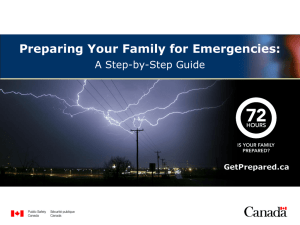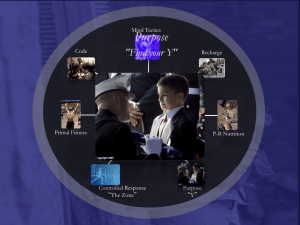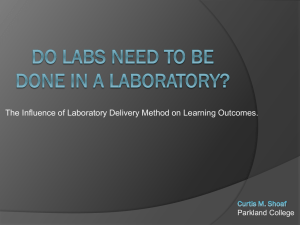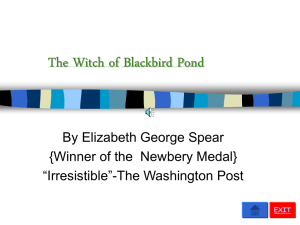Document
advertisement
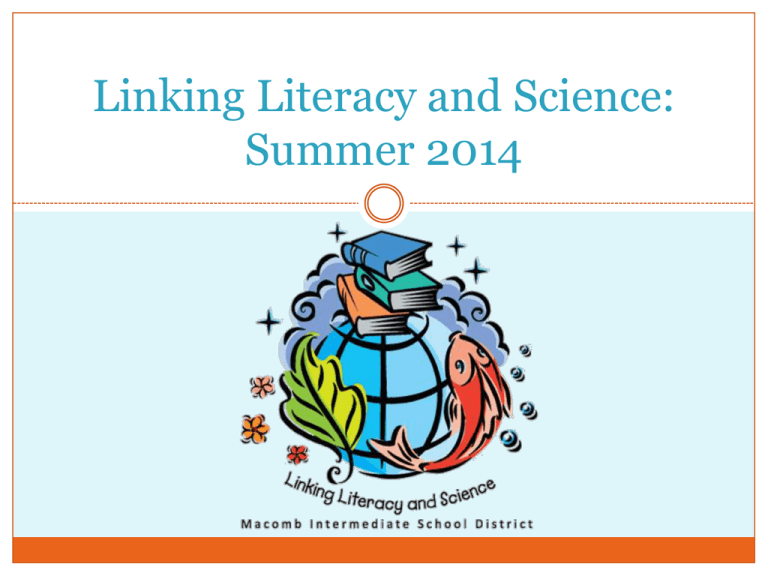
Linking Literacy and Science: Summer 2014 Getting the most out of Picture Perfect Science Choose one person at your table to read the Roller Coaster book aloud to your group. Choose one person at your table to read the Roller Coaster book aloud to your group. What do you think your face would look like if you were riding this roller coaster? List five words that describe what it would feel like to ride this roller coaster. (Page 136) The motion of the roller coaster is similar to… With a partner, do each of the challenges on page 33 of your notebook. Read “The Role of the Teacher” on page 22. Which of these questions might be helpful as you guide students in meeting these challenges? What patterns do you notice about the motion of the marble? Draw a picture of two of the challenges. Label the place(s) on each picture where the marble is fastest. Label the place(s) on each picture where the marble is slowest. 5E Learning Cycle Engage Explore Explain Elaborate Evaluate http://www.bscs.org/bscs-5e-instructional-model 5E Learning Cycle Engage Explore Explain Read pages 32 and 33. If a visitor walks into your classroom, how will they know it is a “5E” learning environment? Elaborate Evaluate http://www.bscs.org/bscs-5e-instructional-model 5E Learning Cycle Engage Explore Writing prompts for science notebooks Explain Elaborate Evaluate http://www.bscs.org/bscs-5e-instructional-model What questions do you have about falling objects? Scientific Questions Read pages 20 and 21. What are some ways you might support students as they generate their own questions? How might you support students in finding answers to testable questions? Research questions? Read pages 138 and 139. What are the strengths and limitations of the Dropping Races activity as written in More Picture-Perfect Science? What are some ways you might get the most out of this activity? Getting the most out of the Dropping Races activity Start with a testable question (generated by students) Make predictions Model procedures “Too close to tell” and “tie” Multiple trials Compile class data Answer the testable question (support with evidence) Class discussion Science notebooks Compile class data Answer the testable question Writing Class discussion What are we looking for in a written response? CLAIM: Answers the question correctly EVIDENCE: Provides several pieces of evidence to support answer Providing Feedback to Students What did you actually observe? What are the important details that another scientist would need to know? What evidence do you have to support your thinking? Does what you have written agree with the data you recorded? What questions do you have now? Providing Feedback to Students What did you actually observe? What are the important details that another scientist would need to know? What evidence do you have to support your thinking? Does what you have written agree with the data you recorded? What questions do you have now? What would you say to this student to move their scientific thinking forward? Providing Feedback to Students What did you actually observe? What are the important details that another scientist would need to know? What evidence do you have to support your thinking? Does what you have written agree with the data you recorded? What questions do you have now? What would you say to this student to move their scientific thinking forward? Providing Feedback to Students What did you actually observe? What are the important details that another scientist would need to know? What evidence do you have to support your thinking? Does what you have written agree with the data you recorded? What questions do you have now? What would you say to this student to move their scientific thinking forward? Summer school science notebooks are about thinking like a scientist, not about… • …a grade • ...lots of extra teacher work Science Logistics Which Picture-Perfect Lessons? Science Kit More Picture-Perfect Science Chapters Science Kit A Chapter 7: How Big is a Foot? Chapter 12: Be a Friend to Trees Science Kit B Chapter 14: Roller Coasters Chapter 16: If You Find a Rock Science Kit C Chapter 15: Mirror, Mirror Chapter 17: Sunshine on My Shoulders Science Kit D Chapter 19: Imaginative Inventions Chapter 20: A Sense of Wonder Science Kit Rotation Schedule Classroom 1 Classroom 2 Classroom 3 Classroom 4 Week 1 July 21-24 Science Kit A Science Kit D Science Kit C Science Kit B Week 2 July 28-31 Science Kit B Science Kit A Science Kit D Science Kit C Week 3 August 4-7 Science Kit C Science Kit B Science Kit A Science Kit D Week 4 August 11-14 Science Kit D Science Kit C Science Kit B Science Kit A Science Kit Inventory Nonconsumables: • These items will not be used up by doing the activities. • Use the “Check” columns on the page to show that they are there when you pass the kit along to the next classroom. • These items must be returned to MISD at the end of camp. Consumables: • These items will be used up by doing the activities. Please only use the amount allotted for one class during your rotation. • These items do not need to be returned to MISD at the end of camp unless you have leftovers. Science Kit Inventory Some kits only have nonconsumables. NOTE: Please inventory your kits as soon as you get them. If you do not have enough materials, call Mike or Jennifer ASAP. Returning the Science Kits Deliver to MISD August 14 1:00 – 3:00 PM Repackage materials in labeled bags. Please keep kits together in the assigned tubs. Thank you! SCIENCE QUESTIONS? JENNIFER GOTTLIEB jgottlieb@misd.net MIKE KLEIN mklein@misd.net


